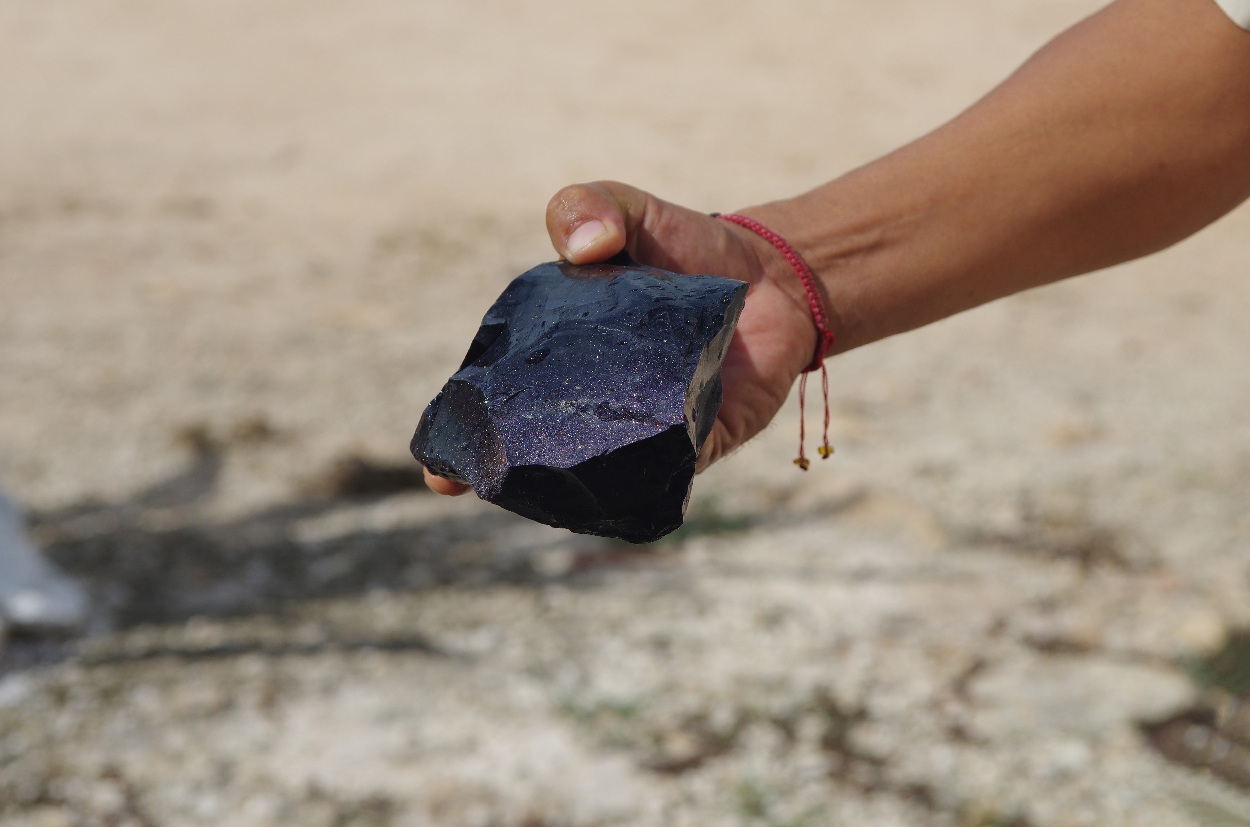A new study by Tulane University, in collaboration with Mexico’s Proyecto Templo Mayor, reveals new insights into the extensive obsidian trade networks of the Mexica (Aztecs).
Obsidian is a naturally occurring volcanic glass that forms when lava cools rapidly with minimal crystal growth. The glass can break to form very sharp edges, making it an ideal material for crafting blades, arrowheads, and ceremonial objects by various Mesoamerican cultures.
According to the study published in the Proceedings of the National Academy of Sciences, archaeologists analysed 788 obsidian artefacts excavated from the Templo Mayor, the main temple of the Mexica capital, Tenochtitlan, located in the historic centre of Mexico City.
The findings revealed that the Mexica favoured green obsidian for ceremonial artefacts from the Sierra de Pachuca, a mountain range in central Mexico known for deposits of green-hued obsidian. Sierra de Pachuca obsidian was valued for its quality and held symbolic ties with the legendary city of Tollan and the creator god Quetzalcoatl.
Some of the studied examples originate from outside the political domain of the Mexica, indicating an extensive trading network that relied not only on military conquest but also market-driven exchanges with rival cultures for domestic needs.
The study was also able to trace the chronology of obsidian use by the Mexica, from the founding of Tenochtitlan around AD 1375 until it was captured by the Tlaxcaltec and the Spanish in AD 1521.
“During the empire’s early phases, more variety in obsidian sources appeared in both ritual and everyday objects. After the Mexica consolidated power around AD 1430, obsidian for ritual purposes became almost exclusively sourced from Sierra de Pachuca, suggesting growing religious standardisation and centralised control. This kind of compositional analysis allows us to trace how imperial expansion, political alliances and trade networks evolved over time,” said lead author Diego Matadamas-Gomora, a PhD candidate in Tulane’s Department of Anthropology.
Header Image Credit : Shutterstock
Sources : Tulane University





